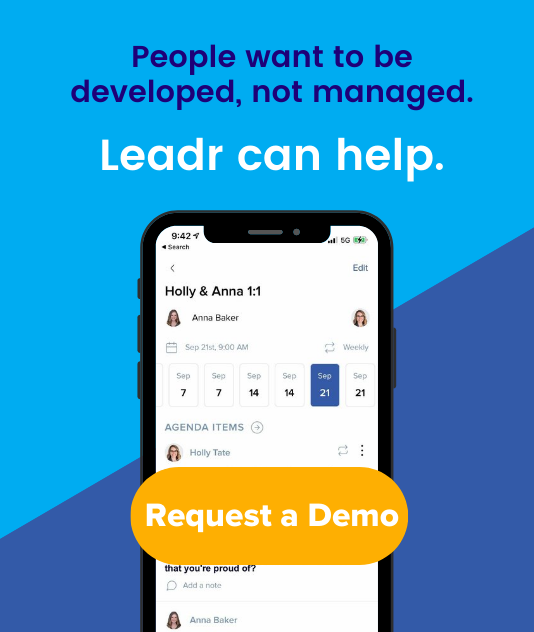Nail the First Impression - Why Mission and Vision Matter in Your Onboarding Process
From the first moment a new hire walks through the door on day one, caring for and developing them should be on the top of your to-do list. You don’t get a second chance to make a great first impression.
Gen Z is becoming a larger part of our workforce, and they're looking to join organizations that offer meaningful work and will support and develop them. In fact, Development opportunities were a top attraction for 23% of Gen Z vs. 17% of millennials at the same age in 2013 (Gartner). This trend will only continue to grow.
They’re looking for organizations with a mission they are passionate about. As an employer, hiring choices can sometimes be tough to figure out: who would be the best fit for this specific role? But as a job seeker, there is also a choice: how will this organization fit into my goals and passions?
As so many employees and organizations are reevaluating what work looks like as we navigate new norms and practice agility through the pandemic, there’s no better time to emphasize mission and vision at the forefront of your onboarding process. It’s time to show off why your team loves coming to work and why others can’t wait to join.
Here’s a quick start guide on 4 ways you can start infusing your mission into your onboarding process:
1. Words are impactful.
It may seem like a small thing, but the way you talk about your organization and your work is a foundational step to infusing your mission, vision and culture into your onboarding process.
Reinforcing vocabulary can be as big a part of onboarding as showing someone the branding guidelines - and in a way, your words are part of your overall brand. Maybe it’s using intentional verbiage like “teammates” instead of “employees” to emphasize a culture of support and collaboration.
Your values and mission statement should be reinforced throughout the week.
Consider sending new hires an email each day of their first week with fun facts about the organization or culture tidbits and to encourage them through the process and emphasize or highlight where or who they can go to with questions as they navigate their new role. In this day and age, you can even consider texting them ahead of their first day to check-in and share any important info (like where to park or what to wear - trust us, that will be appreciated!)
However you do it, communicating how, and more importantly why, your organization exists, how you conduct work, and what values drive your mission is a critical part of embracing a new team member. Want to build a strong team that is aligned with mission and vision and knows the ins and outs of why they do things a certain way and why it matters? Make this known in onboarding. It will change the employee experience.
2. Make a plan that extends far beyond the onboarding week.
While the first week can be an overwhelming time, you can take some of the pressure off by preparing your team members for what they can expect in weeks and months to come. Meaningful output comes from meaningful input first.
Your new team member should feel that the door is open if they have feedback, questions, or ideas down the road. How can you ensure that’s clear? Start your one-on-one meeting cycle in week one. This provides your team members with a space to ask questions, believe in your culture of development, and begin building trust with you from day one.
Additionally, you don’t have to - and shouldn’t - wait until the end of the year to give performance feedback. Identifying potential issues, setting goals, and creating a pathway for long-term success is something you can talk through after the first 90 days. During the onboarding process, start those conversations so your team members know what to expect, and start learning the rhythm of hearing and applying feedback. It’ll make for a much smoother transition as the weeks and months of their first year go by.
Your plan for success for a new team member can also be letting them know about growth tracks and development opportunities. Remember, this is something our Gen Z workers are passionate about. With a goal in mind to work towards, they’ll feel equipped and empowered to go far beyond their job expectations.
3. Set them up with the right people.
A mentor or coach is a fantastic tool for a new hire. Not only does this provide a safe space to answer questions, provide feedback, and build connections with others, but it’s also a way for you to open up space for seasoned team members to practice development and leadership skills.
Here’s a sample schedule to consider for new hires and mentors:
- Month 1: Weekly meeting
- Month 2-3: Bi-monthly meeting
- Month 4-6: Monthly meeting
- Month 7-12: Every-other month
4. Be sure that mission and vision are recognizable organization-wide.
One thing you may not always think about is that the onboarding process goes beyond the meetings a new hire has with HR or meet and greets with new team members. A new team member is also observing everyone else in the company, including leadership. They’re looking at how others respond to their teammates or supervisors, how leadership distributes information, or how they fit into the big picture. So it’s important to ensure that mission and vision are infused into other parts of your company rhythms because those can be part of the process of onboarding someone as well.
Consider ideas such as:
- Make culture a part of your staff meetings. Have a team member choose a value and highlight how they saw it lived out that week or month.
- Have the leadership team record videos on each of your values. New hires can watch one a month and answer reflective questions about how that value applies to their role and how they’ll live it out
- Have employees email their leader once a week with a way they lived out one of the values and where they saw someone else live one out.
- When project planning, be sure to tie each initiative back to a value.
Although your official onboarding process may be just one week, in reality, learning and successfully living out an organization’s mission and values is an ongoing process. It takes time on the front-end, but this intentionality will set you and your new team members up for success over the long term.
We’d love to hear how this helped you and what ideas you have. What are some ways you can infuse your mission and values into a new hire’s first few months? Be sure to download our onboarding ebook for more guidelines, tips, and even an onboarding process checklist.
Share this
You May Also Like
These Related Stories

Are you prepared for the future of eLearning?

Three Steps to Greater Clarity and Transparency In Your Work







No Comments Yet
Let us know what you think